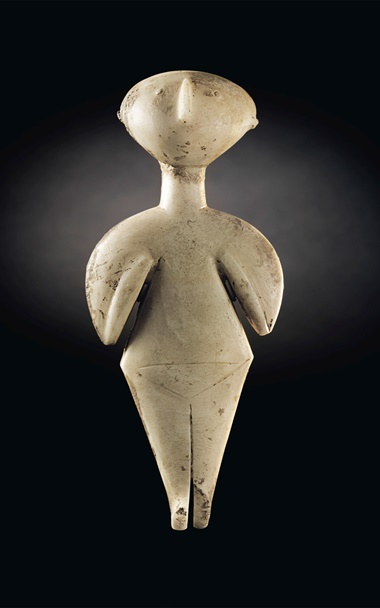Assyrian empire was in first millennium BC, so 2500 years old anyway for the statue. (Assyria - most of present day Iraq, parts of Iran, Kuwait, Turkey).
- Wikipedia.According to Eckart Frahm's study of the Demon, the appearance of Pazuzu has remained fairly uniform throughout his history.Pazuzu is depicted as a combination of diverse animal and human parts. His body canine-like but scaled, birds' talons for feet, two pairs of wings, a scorpion's tail and a serpentine penis. He has his right hand up and left hand down. His face is striking, with gazelle horns, human ears, a doglike muzzle, bulging eyes, and wrinkles on the cheeks.
"I, Pazuzu, king of the evil spirits of the air who, from the mountains, violently, in rage, goes out, I am"
Note, Pazuza, Pazuzu, Fazuza


